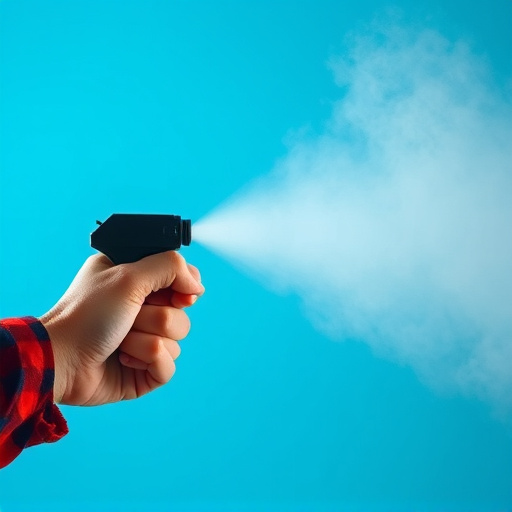Proper decontamination after using pepper spray at home is essential to prevent health issues. This involves a quick move to fresh air, eye rinsing for 15 minutes, and separate washing of contaminated clothing. Create dedicated zones with clear instructions, regularly maintain them, and follow post-exposure cleaning steps like warm water rinsing, mild soap use, hot water laundry, and bagging non-washable items for 24 hours.
“Personal security is a top concern in today’s world, leading many to seek effective non-lethal deterrents. One powerful tool gaining popularity is pepper spray, offering both immediate protection and long-term safety benefits. This article explores the multifaceted aspect of pepper spray as a personal defense mechanism. We’ll delve into the advantages and safety considerations, providing essential knowledge for responsible usage. Additionally, we offer practical guides on setting up decontamination zones at home and effective post-exposure cleaning procedures, ensuring users stay safe and prepared.”
- Understanding Pepper Spray: Benefits and Safety
- Setting Up Decontamination Zones at Home
- Effective Post-Exposure Cleaning Procedures
Understanding Pepper Spray: Benefits and Safety
Pepper spray, a non-lethal deterrent, has become a popular personal security device due to its swift and effective immobilizing effects. Unlike traditional self-defense options, pepper spray temporarily incapacitates an aggressor by causing intense irritation and pain in the eyes, nose, and throat. This gives users valuable time to escape potentially dangerous situations.
One of the key benefits of pepper spray is its ease of use. It’s non-lethal and non-persistent, meaning it washes off with water and doesn’t leave lasting damage. However, proper decontamination steps at home are essential after use. Users should immediately seek fresh air if sprayed, rinse eyes thoroughly with clean water for at least 15 minutes, and wash any affected clothing separately to prevent cross-contamination. Regular practice of these decontamination measures ensures users remain safe and healthy following the deployment of pepper spray.
Setting Up Decontamination Zones at Home
Creating decontamination zones at home is an essential step in preparing for and responding to potential threats, especially with non-lethal deterrent devices like pepper spray. Start by identifying specific areas within your residence where quick decon can take place. These zones should be easily accessible, well-lit, and spacious enough for individuals to move around and remove contaminated clothing.
Implementing simple yet effective decontamination steps is crucial. Place designated bins or containers at entry points and in the decon zones. Mark them clearly with signs indicating “Pepper Spray Decontamination” and include instructions. These should outline the process: Remove contaminated clothing, place items in the bin, wash hands thoroughly, and change into clean clothes. Regularly maintain and sanitize these areas to ensure their effectiveness as part of your home security routine.
Effective Post-Exposure Cleaning Procedures
After encountering a potentially dangerous situation where a non-lethal deterrent, such as pepper spray, has been used, proper post-exposure cleaning is essential to ensure safety and prevent any adverse effects. The decontamination process involves several steps to effectively remove any residual spray from clothing, skin, and living spaces.
For personal items, start by rinsing affected areas with warm water. Pepper spray can be neutralized through this initial rinse. Use mild soap if available to gently clean the skin or fabric. For clothing, wash them separately in hot water (at least 130°F) and a good quality detergent. This temperature ensures thorough cleaning and removal of any pepper spray particles. Items that cannot be washed, like shoes or bags, should be sealed in a plastic bag for at least 24 hours to allow any remaining spray to dissipate before handling or using them again. Additionally, regularly cleaning and storing your personal security devices properly can help maintain their effectiveness and minimize the need for extensive decontamination post-exposure.
A non-lethal deterrent like pepper spray, combined with proper decontamination steps at home, offers a comprehensive personal security strategy. By understanding its benefits and safety measures, setting up designated zones, and adhering to effective post-exposure cleaning procedures, individuals can better protect themselves in various scenarios. These practical decontamination methods ensure that homes remain safe havens, empowering folks to live with enhanced peace of mind.
